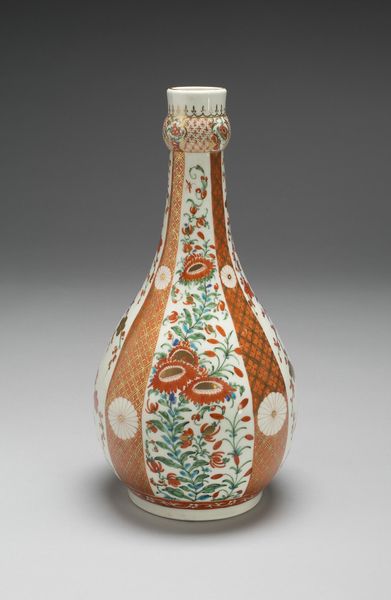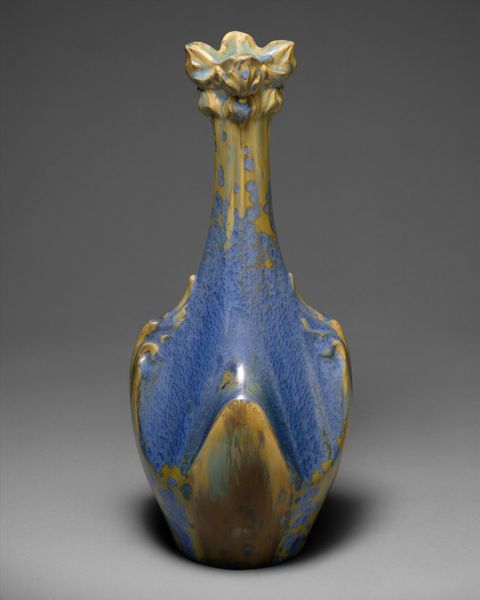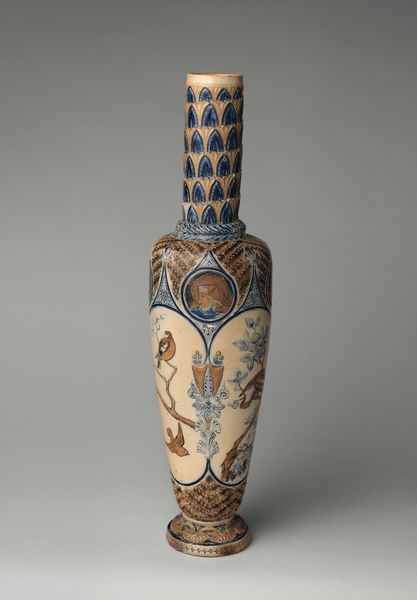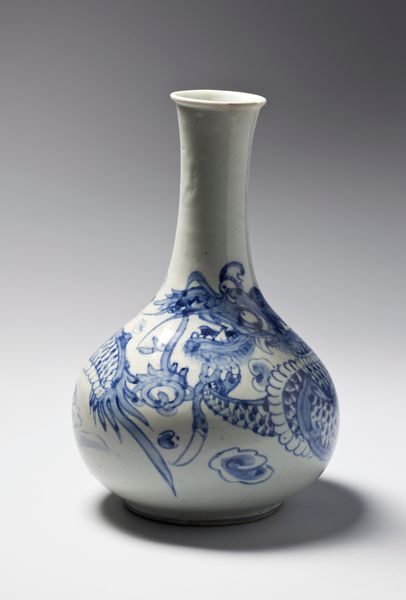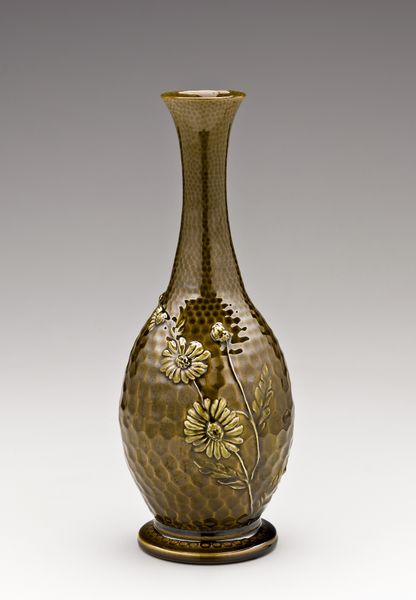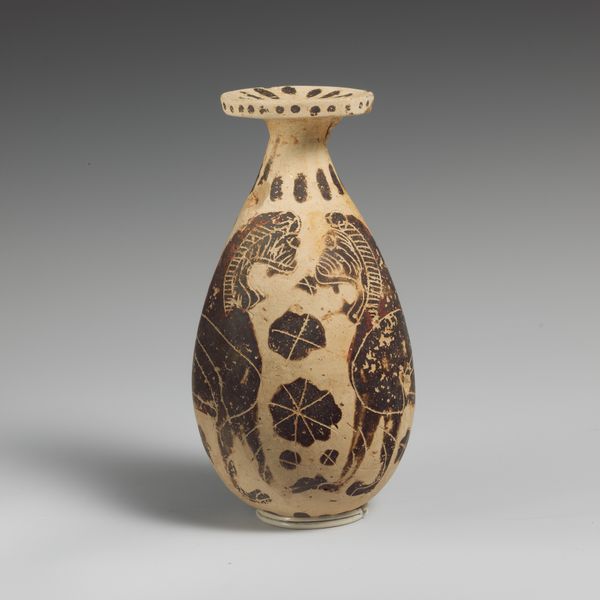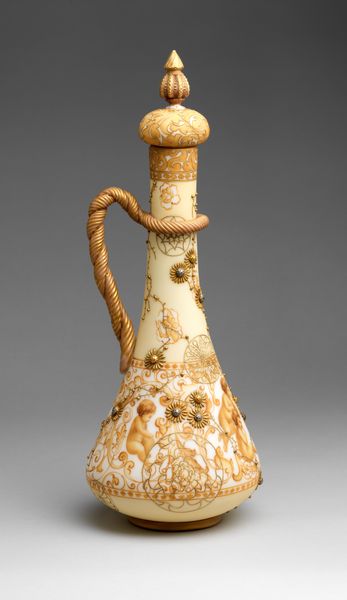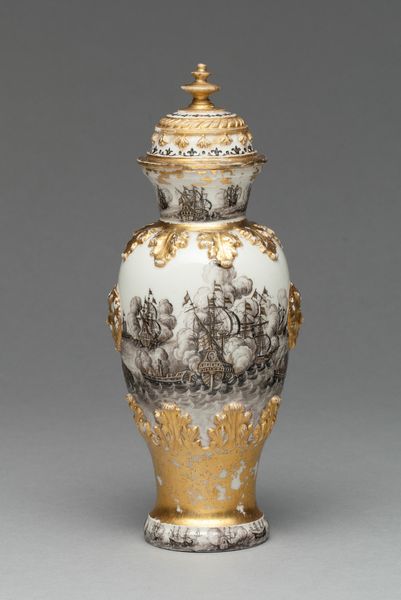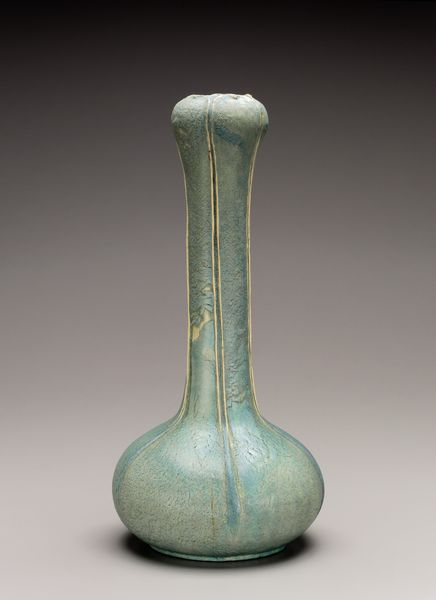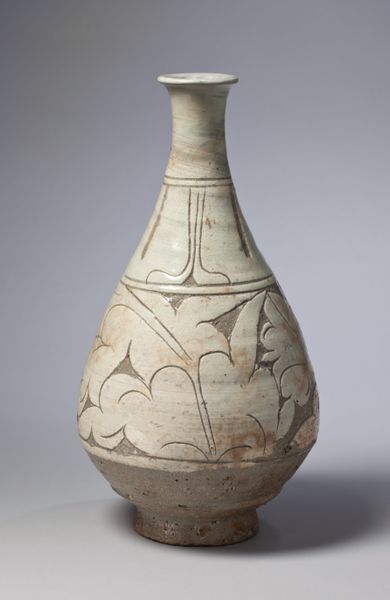
ceramic, earthenware, sculpture
#
ceramic
#
bird
#
flower
#
figuration
#
earthenware
#
stoneware
#
sculpture
#
ceramic
#
decorative-art
Dimensions: Overall (confirmed): 30 3/16 × 7 1/8 × 7 1/8 in. (76.7 × 18.1 × 18.1 cm)
Copyright: Public Domain
Curator: Look at the imposing form of the "Tall Vase with Four Roundels" created by R. W. Martin and Brothers in 1876, currently residing here at the Metropolitan Museum of Art. Crafted from earthenware, it's a magnificent piece of decorative art. Editor: It certainly grabs your attention, doesn't it? The height gives it an almost architectural feel. And the textures – the way the light plays off the raised floral and figural elements…it’s almost sculptural. Curator: Precisely. The Martin brothers were central figures in the late 19th-century art pottery movement. Their work reflected a deliberate departure from mass-produced ceramics, embracing individuality and artisanal skill. It spoke to the era's growing Arts and Crafts sentiments and rebellion against industrial aesthetics. Editor: That rebellious spirit really comes through. The design avoids symmetry, flirting with asymmetry, which heightens the vase's animation. And consider how those roundels depicting stylized figures break up the upward thrust of the plant forms. Is there a theme uniting them? Curator: It’s been suggested that the figures reference literary or mythological narratives familiar to their patrons. Think about the growing literate middle classes and how they cultivated an appreciation for visual art with allegorical layers. The brothers certainly tapped into that market. Editor: Indeed. The visual language speaks of symbolism and hidden meaning, but the organic motifs suggest something of a more primal or "natural" influence, right? The blue glazed neck feels like the mouth of something emerging upwards, growing, almost sentient... Curator: Yes! This stoneware was shown in several of their exhibits during their time to highlight that the process by which stoneware ceramics are produced is one rooted in the beauty of natural expression! It demonstrates the evolution of craftsmanship when working to highlight both the history, material, and process that they were known for. Editor: I see this vase now, on display amongst our contemporary collections as almost daring viewers to remember an age of crafted intricacy when pieces took time, process, and attention. It truly seems unique within its space, its own narrative contained only within the earthenware walls, flowers and birds... I think that it has the power to transport its viewer into times unknown, Curator: Absolutely. The context of its creation and reception provide a window into Victorian values.
Comments
No comments
Be the first to comment and join the conversation on the ultimate creative platform.
